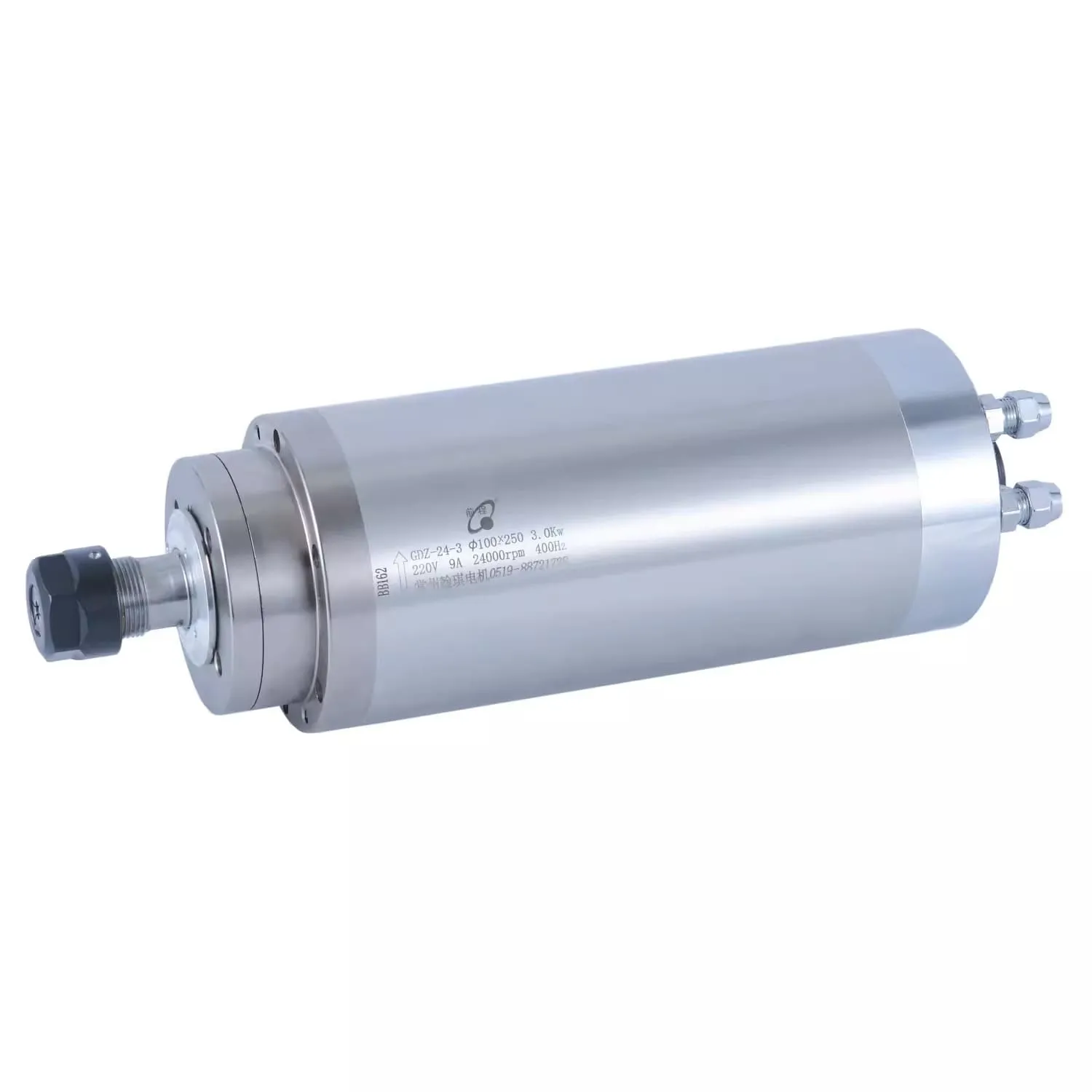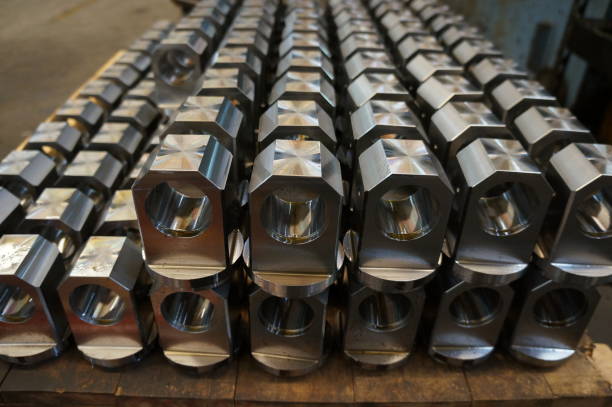CNC, which stands for Computer Numerical Control, represents one of the most significant advancements in the modern manufacturing world. This technology has revolutionized industries, from aerospace and automotive to furniture making, by enabling precise, consistent, and efficient production. But what exactly does CNC stand for, and how does it impact the machine operations we see today? In this comprehensive guide, we’ll explore everything about CNC machines, their components, types, and applications. If you’re curious about “what does CNC stand for in machines,” read on to discover the full story behind this transformative technology.
What is CNC Technology?
CNC stands for Computer Numerical Control, a technology that allows machinery to operate using instructions sent directly from a computer. This method replaces traditional manual control, where an operator would need to physically guide the machine. Instead, CNC machines use computer programs to dictate precise movements, significantly reducing human error and improving production efficiency.
The Evolution of CNC Machines
The concept of CNC machining has its roots in the numerical control systems developed in the 1940s and 1950s. Engineers at that time began experimenting with punch cards to dictate the movements of machinery. As computer technology evolved, these cards were replaced by fully digitized systems, and CNC technology was born.
CNC machining is now used in a wide range of applications, from manufacturing engine parts in the automotive industry to crafting intricate jewelry pieces. It is widely adopted across industries that require precision and high-volume production.
Key Components of a CNC Machine
A CNC machine is a sophisticated tool that consists of several key components. Each component works together to create the desired final product, whether it be a simple part or a complex assembly.
1. The Controller
The controller is essentially the computer that processes and executes the instructions for the machine. It interprets the G-code generated by CAM software and directs the machine’s movements accordingly.
2. Spindle
The spindle is the rotating part of the machine that drives the cutting tool. CNC spindles can vary widely in power and speed, depending on the application. For example, a 24000RPM 3KW ER20 Water-Cooling Spindle is ideal for high-speed precision machining, offering consistency across different materials.

3. Tool Changer
The tool changer is responsible for swapping out cutting tools during the machining process. Many CNC machines have automatic tool changers that can hold multiple tools, allowing for different operations like drilling, milling, and turning without manual intervention.
4. Worktable
The worktable is where the raw material, or workpiece, is mounted. The worktable can move in different directions, allowing the spindle to access all parts of the workpiece. Most worktables are equipped with clamps or fixtures to secure the material in place during machining.
5. Drive Motors
Drive motors move the different components of the CNC machine, such as the spindle or worktable, based on commands from the controller. These movements are critical to achieve the required precision for CNC machining.
Types of CNC Machines
CNC machines come in many different types, each tailored for specific tasks. Here are some of the most common types of CNC machines used today:
1. CNC Mills
CNC milling machines are designed to cut and shape a workpiece using a rotating cutting tool. These machines are ideal for creating parts with complex geometries. Milling is widely used in industries such as aerospace, automotive, and tool manufacturing.
2. CNC Lathes
CNC lathes work by rotating the workpiece while a cutting tool removes material to create cylindrical shapes. Lathes are primarily used in metalworking and can achieve a high level of detail and accuracy. You can learn more about CNC lathes in our detailed guide: What is a CNC Lathe?.
3. CNC Routers
A CNC router is similar to a milling machine but is typically used for woodworking, plastic, and softer materials. Routers can create detailed and intricate designs, making them ideal for decorative and artistic projects.
4. CNC Plasma Cutters
CNC plasma cutters use a high-powered plasma torch to cut metals, including steel and aluminum. These machines are commonly used in metal fabrication and automotive body shops for cutting metal sheets and panels.
5. CNC Laser Cutters
CNC laser cutters utilize a powerful laser to cut or engrave materials. These machines are known for their precision and are often used for intricate cutting and engraving of thin sheets of metal, wood, or plastic.
The CNC Machining Process Explained
The process of CNC machining involves several steps, from designing a part to the final production stage. Here’s a breakdown of the entire CNC machining process:
1. Designing with CAD Software
The CNC process starts with a CAD (Computer-Aided Design) drawing. This software allows machinists to create a detailed model of the part. Popular CAD programs include AutoCAD, SolidWorks, and Fusion 360.
2. CAM Programming
After creating the design, CAM (Computer-Aided Manufacturing) software converts the CAD model into a series of commands for the CNC machine to follow. These commands are known as G-code and M-code, which tell the machine how to move, what speed to use, and what operations to perform.
3. Machine Setup
The raw material, or workpiece, is clamped onto the CNC machine’s worktable. The appropriate cutting tool is attached to the spindle, and the G-code is loaded into the machine’s controller.
4. Execution and Monitoring
The machine begins executing the commands to create the part. CNC machines can run autonomously, but an operator often supervises the process to ensure everything goes smoothly. This helps prevent errors such as tool breakage or material displacement.
5. Post-Processing
Once machining is complete, post-processing such as sanding, polishing, or heat treating may be necessary to finish the part. These steps ensure that the part meets the quality standards required for its intended application.
Benefits of CNC Machines
CNC machines offer several advantages over traditional, manually operated machines. Here are some of the key benefits:
- Precision: CNC machines provide exceptional precision, especially when producing complex parts with tight tolerances.
- Efficiency: Automated machining reduces the need for manual labor and accelerates production cycles.
- Consistency: With CNC, each part is made to the exact same specifications, reducing the potential for human error and inconsistencies.
- Complex Capabilities: CNC machines can perform tasks that would be impossible or extremely difficult to achieve manually, such as 5-axis machining for highly detailed parts.
Types of CNC Machine Programming
The programming aspect of CNC machines is crucial for accurate machining. Here are some of the different programming techniques used:
1. G-Code Programming
G-code is the language that CNC machines understand. It tells the machine what movements to make, at what speed, and in what direction. G-code programming is a universal standard used by almost every CNC machine.
2. Conversational Programming
Conversational programming allows CNC operators to create simple programs directly on the machine, often through a user-friendly interface. This method is great for beginners or for making quick adjustments without needing a full CAD/CAM program.
3. CAM Software Programming
With CAM software, the machinist creates the entire program using a computer. The software generates the G-code and provides a visualization of the machining process, making it easier to anticipate and avoid errors.
CNC Machine Operators and Their Role
A CNC machinist or operator plays a key role in the success of CNC machining. Even though CNC machines are highly automated, the machinist is responsible for setting up the machine, loading the tools, and monitoring the process.
Operators also need to understand how to read technical blueprints and make adjustments to the machine settings as needed. They must be familiar with CNC software and capable of troubleshooting any issues that arise during production.

For the best results in CNC machining, investing in quality spindles like our 2.2KW ER20 Air-Cooled Spindle can greatly improve production consistency and efficiency.
FAQs
1. What does CNC stand for in machine technology?
CNC stands for Computer Numerical Control, which is a method of automating machinery using computer programming.
2. What types of materials can be machined with CNC machines?
CNC machines can process a wide variety of materials, including metals (such as steel and aluminum), plastics, wood, and even foam.
3. Why are spindles important in CNC machines?
The spindle is crucial as it holds the cutting tool and determines the quality of the machining. A high-quality spindle ensures precision and speed during operations.
4. What is G-code, and why is it important?
G-code is the language that CNC machines use to execute commands. It tells the machine how to move, how fast to go, and where to make cuts.
5. Can CNC machines operate without human intervention?
While CNC machines are capable of automated operation, an operator is often required to set up the machine, load the material, and oversee the process to prevent errors.
Conclusion
CNC technology—or Computer Numerical Control—has completely transformed the way we approach machining, offering precision, consistency, and efficiency that was unattainable with manual methods. Whether you’re new to the world of CNC or are looking to expand your current manufacturing capabilities, understanding how CNC machines work, the different types of CNC machines, and their benefits can provide valuable insight into their enormous potential.
Investing in high-quality components, such as spindles, can greatly impact the success of your CNC projects. For instance, our 24000RPM 3KW ER20 Water-Cooling Spindle ensures you have the reliability and precision needed for even the most complex jobs.
The future of CNC machining is promising, with advancements continuously enhancing speed, precision, and versatility. For those willing to harness the full power of CNC, the opportunities are truly endless.

